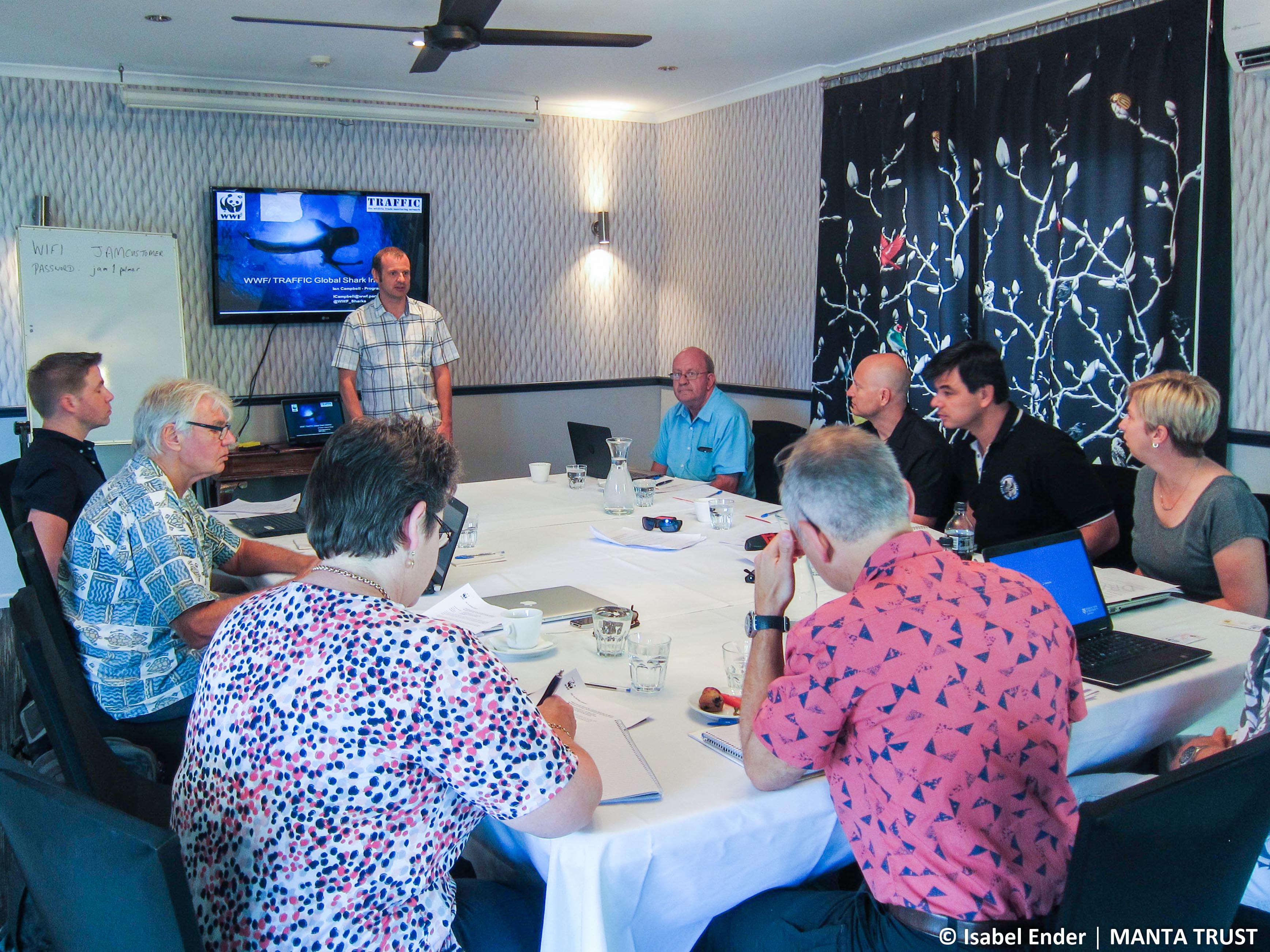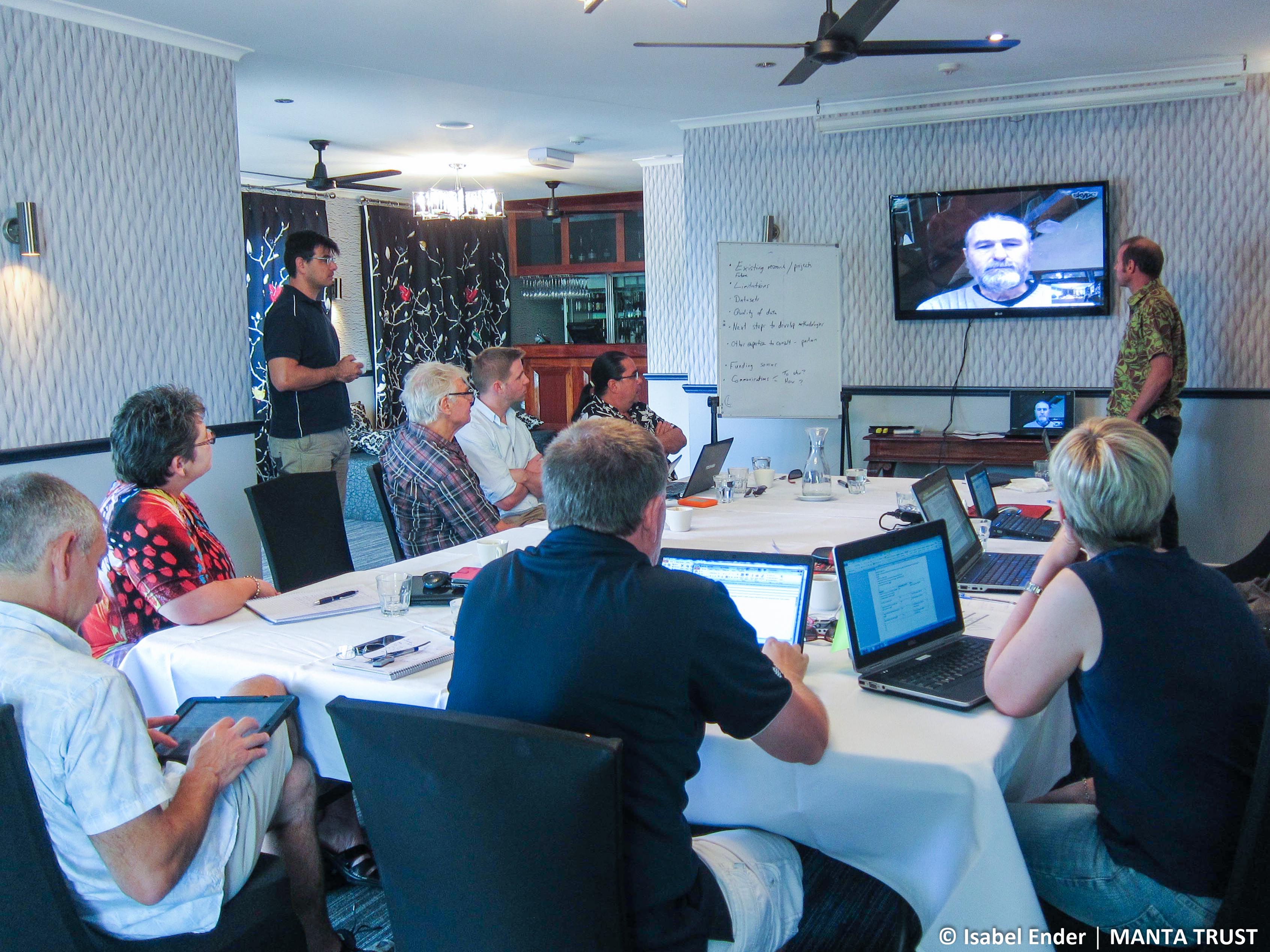A joint effort for sharks and rays in the Pacific
Words by Isabel Ender
The past three days have not only been inspiring and productive, but also great fun. Not many people can say that they love their job AND the people they interact with through their work, but I certainly do. This past week, some of the brightest minds in shark research and conservation came together during a workshop in Queensland, Australia, and I was fortunate to participate and contribute a mobulid ray perspective. The purpose of this workshop, which forms part of a larger project by WWF-Pacific, was to develop a rapid assessment toolkit for the Pacific Islands’ shark and ray populations. Through improved data collection for management, this project aims to promote more sustainable use of sharks and rays for the benefit of the Pacific Island people.
The idea of rapidly assessing the status of a shark or ray population, such as its size and distribution, with the purpose of developing a national action plan is not new; however, what is different is the critical look we took at the existing methods and current resources to develop a toolkit, like a ‘menu’. It would include a range of methods we consider scientifically sound, but also practical enough to be used by Pacific Island countries. As scientists, we can easily forget the challenges that exist outside of academia, as we aim for optimal results and techniques in our research. However, if we want to promote good scientific decision-making for conservation management in the world outside academia, the approach needs to be realistic and achievable for institutions, NGOs and government agencies that have little resources or time available for full-blown research projects. How can one adapt a data collection method to suit a limited timeframe? How can one do a good rapid assessment with a small sample size? These questions are critical and help to bridge the gap often seen between academia and management.
During the workshop we brainstormed a range of approaches, including social science methods for assessing trends, reviewed existing databases and programmes, and also had some entertaining creative breaks. There was a fantastic, diverse set of participants ranging from representatives of the Secretariat of the Pacific Regional Environment Program, scientists from the Australian national research organisation CSIRO, James Cook University, the Manta Trust, the Australian Department of Environment, the Pacific Islands Forum Fisheries Agency, and the University of the South Pacific, plus one participant, Dr Jeremy Prince, who called in via Skype for one of the sessions. Over the coming months the participants will continue to provide feedback and guidance to this project as it develops, to see it move from a pilot phase to a complete toolkit used by the Pacific Islands. The Manta Trust will contribute not only knowledge and insights about mobulid research for conservation planning, but through our growing network of projects in the Pacific region, we will also actively contribute crucial data throughout the pilot phase and beyond completion of this project.


